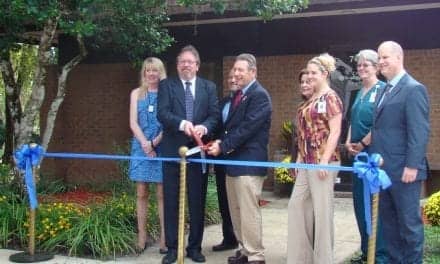Phoenix Children’s is unveiling its new and expanded neurodiagnostic laboratory designed to improve comfort and care for children undergoing sleep studies, electroencephalogram (EEG) and electromyography (EMG) testing, and nerve conduction studies.
At Phoenix Children’s Hospital – Thomas Campus, the renovated neurodiagnostic sleep and EEG laboratory, which opens April 27, boasts 6,900 square feet, including eight patient rooms, a family lounge, and designated work areas for clinicians.
“Patient comfort is always a priority for Phoenix Children’s, but it takes on much greater significance when it comes to testing that can feel stressful for children,” says Angus Wilfong, MD, division chief of neurology, interim division chief of developmental pediatrics and associate director of BNI at Phoenix Children’s, in a release. “This is especially true of sleep studies, which are critical for diagnosing a sleep disorder but are often hard to perform because kids have trouble sleeping well in a hospital room. The rooms in our new sleep lab were designed to foster relaxation and sleep, which will ultimately improve our ability to diagnose and care for the children we serve.”
The neurodiagnostic laboratory is led by Rupali Drewek, MD, pediatric pulmonologist and sleep medicine specialist and medical director of the sleep disorders program at Phoenix Children’s and Randa Jarrar, MD, pediatric epileptologist and medical director of clinical neurophysiology.
Pediatric patients of all ages undergo EEG testing and sleep studies, from children who have chronic and complex medical conditions to otherwise healthy kids who are experiencing unexpected spells concerning for seizures, sleep disruptions, or other symptoms that warrant a closer look.
During the day, the laboratory will serve children in need of neurodiagnostic testing (including EEGs and EMGs). At night, the sleep laboratory will focus on overnight testing and diagnostics for children who may have sleep disorders, including sleep apnea, narcolepsy, or pediatric limb movement disorder.
Sleep studies can also help providers determine whether patients can safely be weaned off certain equipment such as continuous positive airway pressure.
Features of the new lab include:
- Headboards, footboards, and furniture make each patient room feel more like a child’s bedroom than a hospital room.
- Wired devices and other equipment are contained in cabinets to keep “scary” wires out of view.
- A new lighting system allows clinicians and parents to dim or turn up the lights without disrupting patients.
- Soundproof doors and walls block out noise from hallways and adjacent areas.
- In-room temperature control helps patient families maximize their comfort.
- Soft colors throughout the lab aid in relaxation.
- A room for bariatric patients has more space for a larger bed and additional equipment, ensuring a comfortable environment for children of all ages and sizes. Children who are obese tend to have thicker tissue around the throat, making them more prone to sleep apnea.
- Designated clinician spaces ensure plenty of room for providers and technologists to conduct and monitor testing.
Photo caption: A patient room at Phoenix Children’s neurodiagnostic lab
Photo credit: Phoenix Children’s





